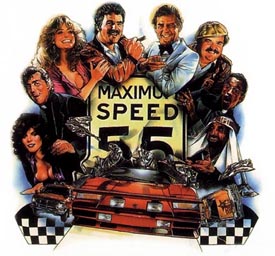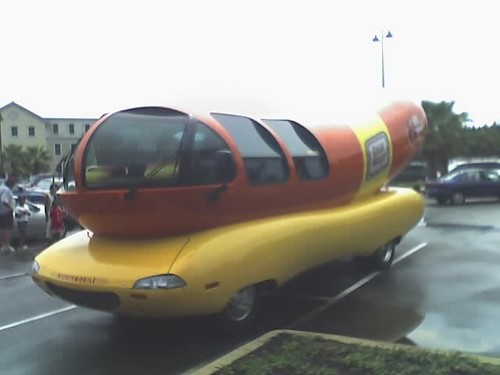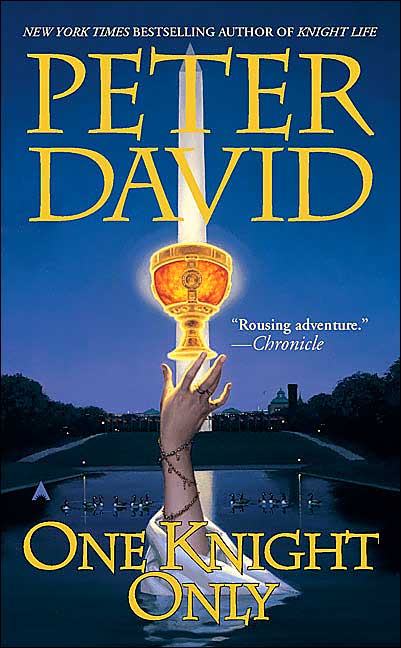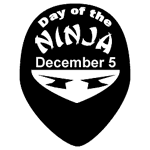Google Blogger has become somewhat of a blogging wasteland. I've moved this blog over to Wordpress. I was keeping them both in sync but I'm tired of doing that.
For new articles and a new look, come visit me over at my new home.
http://blog.paxholley.net
Wednesday, March 28, 2007
Tuesday, March 13, 2007
The Real-Life Legend of the Cannonball Run
 If you've been watching American Idol the last few weeks you've no doubt noticed the numerous promos for a show called Drive. It's an action series about a secret, illegal road race and the people that participate in it (some of them, possibly, under duress). The show starts on April 15 and is produced and written by Tim Minear (one of the main contributers to the tv shows Angel and Firefly). The promos are vague, but in my mind, it looks like a cross between Cannonball Run and Death Race 2000. These promos got me thinking about the Cannonball Run movies and how much I enjoyed them. It also got me thinking about how I heard those movies were based on a real race. Well, I did a little research, and this article is the result. So if you are at all curious about the origins of the movie Cannonball Run, then read on, dear sir, for the ride starts here.
If you've been watching American Idol the last few weeks you've no doubt noticed the numerous promos for a show called Drive. It's an action series about a secret, illegal road race and the people that participate in it (some of them, possibly, under duress). The show starts on April 15 and is produced and written by Tim Minear (one of the main contributers to the tv shows Angel and Firefly). The promos are vague, but in my mind, it looks like a cross between Cannonball Run and Death Race 2000. These promos got me thinking about the Cannonball Run movies and how much I enjoyed them. It also got me thinking about how I heard those movies were based on a real race. Well, I did a little research, and this article is the result. So if you are at all curious about the origins of the movie Cannonball Run, then read on, dear sir, for the ride starts here.The legend begins with Erwin George Baker. Baker was born in Indiana in 1882. Throughout the 1930s, he became an extremely popular motorcycle and automobile race driver.
 Among the many accomplishments in his prestigious career; he won the first ever race at Indianapolis Motor Speedway in 1909, placed 11th in the 1922 Indianapolis 500 and became the first commissioner of NASCAR. However, he gained his greatest notoriety in 1915 after a New York to Los Angeles drive which took 11 days and 7 hours. It was this intercontinental drive that earned him the nickname "Cannonball" after the famous Illinois Central railway car, "The Cannonball". In 1933 he would make the cross country trek again, but this time, he'd do it in only 53 hours and 30 minutes, a record that would stand for almost 40 years. "Cannonball" Baker would pass away in 1960 as one of the most revered and popular automobile and motorcycle drivers of all time. He was inducted into the Motorcycle Hall of Fame in 1998.
Among the many accomplishments in his prestigious career; he won the first ever race at Indianapolis Motor Speedway in 1909, placed 11th in the 1922 Indianapolis 500 and became the first commissioner of NASCAR. However, he gained his greatest notoriety in 1915 after a New York to Los Angeles drive which took 11 days and 7 hours. It was this intercontinental drive that earned him the nickname "Cannonball" after the famous Illinois Central railway car, "The Cannonball". In 1933 he would make the cross country trek again, but this time, he'd do it in only 53 hours and 30 minutes, a record that would stand for almost 40 years. "Cannonball" Baker would pass away in 1960 as one of the most revered and popular automobile and motorcycle drivers of all time. He was inducted into the Motorcycle Hall of Fame in 1998. Fast forward to 1968. Brock Yates is an executive editor for Car & Driver magazine. He writes a scathing article called "The Grosse Pointe Myopians", which critiques the auto industry, its management and its products which makes him infamous within the auto industry. Then, in 1971, Yates, along with fellow Car & Driver editor Steve Smith, decides to create an unofficial, and illegal, intercontinental road race. Inspired by the travel records of Erwin "Cannonball" Baker, the race begins in New York and ends in Redondo Beach, CA. Officially dubbed the Cannonball Baker Sea-To-Shining-Sea Memorial Trophy Dash, the race would serve as a celebration of the US national highway system and also a protest of the soon-to-be passed 55mph speed limit. Yates wanted to prove that careful drivers can safely navigate this country's interstate system at high speeds in much the same way the Germans do with the Autobahn. Yates also believed that if Erwin Baker could complete the journey in a record time of 53 hours and 30 minutes over unfinished roads and horrible conditions, then a modern driver should have no problem doing it over the uninterrupted expanse of the national interstate system.
Fast forward to 1968. Brock Yates is an executive editor for Car & Driver magazine. He writes a scathing article called "The Grosse Pointe Myopians", which critiques the auto industry, its management and its products which makes him infamous within the auto industry. Then, in 1971, Yates, along with fellow Car & Driver editor Steve Smith, decides to create an unofficial, and illegal, intercontinental road race. Inspired by the travel records of Erwin "Cannonball" Baker, the race begins in New York and ends in Redondo Beach, CA. Officially dubbed the Cannonball Baker Sea-To-Shining-Sea Memorial Trophy Dash, the race would serve as a celebration of the US national highway system and also a protest of the soon-to-be passed 55mph speed limit. Yates wanted to prove that careful drivers can safely navigate this country's interstate system at high speeds in much the same way the Germans do with the Autobahn. Yates also believed that if Erwin Baker could complete the journey in a record time of 53 hours and 30 minutes over unfinished roads and horrible conditions, then a modern driver should have no problem doing it over the uninterrupted expanse of the national interstate system.The first run of the Cannonball was made by Yates, his son and Steve Smith in May 1971. Since it was not widely publicized, no one else showed up. After that initial run, the Cannonball was held four more times throughout the '70s. The race really gained some notoriety during the 1972 run, but after the 1975 run, Time Magazine published a series of articles describing the races thereby thrusting the event into the public consciousness. Although no accidents or serious injuries had been sustained in the five runs, Yates thought it was only a matter of time before the law of averages caught up to them as the number of participants grew with each race. Yates and Car & Driver decided to quietly discontinue the race in 1979. The record time amongst all five runs of the race was 32 hours and 51 minutes set by Dave Heinz and Dave Yarborough in the final Cannonball in 1979.
 After the dismantling of the race, Yates wrote about his experiences in a movie screenplay. Before he could get the film made, he was beat to the movie theaters by two movies; Cannonball! and The Gumball Rally. He would rework his screenplay into more of a slapstick comedy picture and have it made as the original Cannonball Run. Did you know that Steve McQueen was originally the favorite for the lead role that eventually went to Burt Reynolds? McQueen died right before filming, and Reynolds said yes because he was in need of a hit after several misfires. The original Cannonball Run movie did so well it had two sequels; Cannonball Run II and Speed Zone! Needless to say, Speed Zone! did not fair as well with critics...or audiences.
After the dismantling of the race, Yates wrote about his experiences in a movie screenplay. Before he could get the film made, he was beat to the movie theaters by two movies; Cannonball! and The Gumball Rally. He would rework his screenplay into more of a slapstick comedy picture and have it made as the original Cannonball Run. Did you know that Steve McQueen was originally the favorite for the lead role that eventually went to Burt Reynolds? McQueen died right before filming, and Reynolds said yes because he was in need of a hit after several misfires. The original Cannonball Run movie did so well it had two sequels; Cannonball Run II and Speed Zone! Needless to say, Speed Zone! did not fair as well with critics...or audiences.In 1984, Car & Driver would decide to re-instate the Cannonball Run, but they renamed it One Lap of America. This time, though, they instituted a speed limit rule which penalized drivers for arriving at the finish line too soon. This was done to avoid any accidents or problems with the law.
Since the original Cannonball was discontinued, many movies and tv shows have celebrated the idea of an underground auto race. In 1975, Death Race 2000 created a darker, comedic version of the race where points were awarded for killing people with your car. In 2001, Rat Race would continue the road race tradition with a star-studded ensemble cast. Also in 2001, Yates would officially allow the Cannonball Run moniker to be used for a reality show called, what else, but
 "Cannonball Run 2001". It would be the precursor to the currently popular Amazing Race. Suprisingly, there are many movies BEFORE Cannonball Run that included a cross country vehicle race. It's a Mad, Mad, Mad, Mad World in 1963 would gather many tv/movie stars of the day and send them on a cross country search for treasure. Those Magnificent Men in Their Flying Machines in 1965 would also include a star-filled cast but pit them in a wacky, international airplane race. In 1968 there was even a cartoon called Wacky Races that pitted many popular cartoon characters of the time in a large multi-vehicle, international race. It seems using the plot device of zany vehicle races has usually provided lots of fun filled plots for movies and tv shows.
"Cannonball Run 2001". It would be the precursor to the currently popular Amazing Race. Suprisingly, there are many movies BEFORE Cannonball Run that included a cross country vehicle race. It's a Mad, Mad, Mad, Mad World in 1963 would gather many tv/movie stars of the day and send them on a cross country search for treasure. Those Magnificent Men in Their Flying Machines in 1965 would also include a star-filled cast but pit them in a wacky, international airplane race. In 1968 there was even a cartoon called Wacky Races that pitted many popular cartoon characters of the time in a large multi-vehicle, international race. It seems using the plot device of zany vehicle races has usually provided lots of fun filled plots for movies and tv shows.This, of course, leads us to the show I mentioned in the beginning of this article, Drive. Check out an extended promo for the show here. It looks to be a more serious take on the Cannonball Run premise, whereas the participants are, for the most part, blackmailed into participating, oh, and they don't know where the finish line is. It looks very intriguing and it has many actors I really like, so I can't wait to catch it on Fox on April 15.
Well, there you have it. The story behind the Cannonball Run. Hope you found it as interesting as I did. I have to go back into training for the rest of the week so please pity me. Please.
Technorati Tags - pop culture movies Cannonball Run TV shows cars
The Real-Life Legend of the Cannonball Run
 If you've been watching American Idol the last few weeks you've no doubt noticed the numerous promos for a show called Drive. It's an action series about a secret, illegal road race and the people that participate in it (some of them, possibly, under duress). The show starts on April 15 and is produced and written by Tim Minear (one of the main contributers to the tv shows Angel and Firefly). The promos are vague, but in my mind, it looks like a cross between Cannonball Run and Death Race 2000. These promos got me thinking about the Cannonball Run movies and how much I enjoyed them. It also got me thinking about how I heard those movies were based on a real race. Well, I did a little research, and this article is the result. So if you are at all curious about the origins of the movie Cannonball Run, then read on, dear sir, for the ride starts here.
If you've been watching American Idol the last few weeks you've no doubt noticed the numerous promos for a show called Drive. It's an action series about a secret, illegal road race and the people that participate in it (some of them, possibly, under duress). The show starts on April 15 and is produced and written by Tim Minear (one of the main contributers to the tv shows Angel and Firefly). The promos are vague, but in my mind, it looks like a cross between Cannonball Run and Death Race 2000. These promos got me thinking about the Cannonball Run movies and how much I enjoyed them. It also got me thinking about how I heard those movies were based on a real race. Well, I did a little research, and this article is the result. So if you are at all curious about the origins of the movie Cannonball Run, then read on, dear sir, for the ride starts here.The legend begins with Erwin George Baker. Baker was born in Indiana in 1882. Throughout the 1930s, he became an extremely popular motorcycle and automobile race driver.
 Among the many accomplishments in his prestigious career; he won the first ever race at Indianapolis Motor Speedway in 1909, placed 11th in the 1922 Indianapolis 500 and became the first commissioner of NASCAR. However, he gained his greatest notoriety in 1915 after a New York to Los Angeles drive which took 11 days and 7 hours. It was this intercontinental drive that earned him the nickname "Cannonball" after the famous Illinois Central railway car, "The Cannonball". In 1933 he would make the cross country trek again, but this time, he'd do it in only 53 hours and 30 minutes, a record that would stand for almost 40 years. "Cannonball" Baker would pass away in 1960 as one of the most revered and popular automobile and motorcycle drivers of all time. He was inducted into the Motorcycle Hall of Fame in 1998.
Among the many accomplishments in his prestigious career; he won the first ever race at Indianapolis Motor Speedway in 1909, placed 11th in the 1922 Indianapolis 500 and became the first commissioner of NASCAR. However, he gained his greatest notoriety in 1915 after a New York to Los Angeles drive which took 11 days and 7 hours. It was this intercontinental drive that earned him the nickname "Cannonball" after the famous Illinois Central railway car, "The Cannonball". In 1933 he would make the cross country trek again, but this time, he'd do it in only 53 hours and 30 minutes, a record that would stand for almost 40 years. "Cannonball" Baker would pass away in 1960 as one of the most revered and popular automobile and motorcycle drivers of all time. He was inducted into the Motorcycle Hall of Fame in 1998. Fast forward to 1968. Brock Yates is an executive editor for Car & Driver magazine. He writes a scathing article called "The Grosse Pointe Myopians", which critiques the auto industry, its management and its products which makes him infamous within the auto industry. Then, in 1971, Yates, along with fellow Car & Driver editor Steve Smith, decides to create an unofficial, and illegal, intercontinental road race. Inspired by the travel records of Erwin "Cannonball" Baker, the race begins in New York and ends in Redondo Beach, CA. Officially dubbed the Cannonball Baker Sea-To-Shining-Sea Memorial Trophy Dash, the race would serve as a celebration of the US national highway system and also a protest of the soon-to-be passed 55mph speed limit. Yates wanted to prove that careful drivers can safely navigate this country's interstate system at high speeds in much the same way the Germans do with the Autobahn. Yates also believed that if Erwin Baker could complete the journey in a record time of 53 hours and 30 minutes over unfinished roads and horrible conditions, then a modern driver should have no problem doing it over the uninterrupted expanse of the national interstate system.
Fast forward to 1968. Brock Yates is an executive editor for Car & Driver magazine. He writes a scathing article called "The Grosse Pointe Myopians", which critiques the auto industry, its management and its products which makes him infamous within the auto industry. Then, in 1971, Yates, along with fellow Car & Driver editor Steve Smith, decides to create an unofficial, and illegal, intercontinental road race. Inspired by the travel records of Erwin "Cannonball" Baker, the race begins in New York and ends in Redondo Beach, CA. Officially dubbed the Cannonball Baker Sea-To-Shining-Sea Memorial Trophy Dash, the race would serve as a celebration of the US national highway system and also a protest of the soon-to-be passed 55mph speed limit. Yates wanted to prove that careful drivers can safely navigate this country's interstate system at high speeds in much the same way the Germans do with the Autobahn. Yates also believed that if Erwin Baker could complete the journey in a record time of 53 hours and 30 minutes over unfinished roads and horrible conditions, then a modern driver should have no problem doing it over the uninterrupted expanse of the national interstate system.The first run of the Cannonball was made by Yates, his son and Steve Smith in May 1971. Since it was not widely publicized, no one else showed up. After that initial run, the Cannonball was held four more times throughout the '70s. The race really gained some notoriety during the 1972 run, but after the 1975 run, Time Magazine published a series of articles describing the races thereby thrusting the event into the public consciousness. Although no accidents or serious injuries had been sustained in the five runs, Yates thought it was only a matter of time before the law of averages caught up to them as the number of participants grew with each race. Yates and Car & Driver decided to quietly discontinue the race in 1979. The record time amongst all five runs of the race was 32 hours and 51 minutes set by Dave Heinz and Dave Yarborough in the final Cannonball in 1979.
 After the dismantling of the race, Yates wrote about his experiences in a movie screenplay. Before he could get the film made, he was beat to the movie theaters by two movies; Cannonball! and The Gumball Rally. He would rework his screenplay into more of a slapstick comedy picture and have it made as the original Cannonball Run. Did you know that Steve McQueen was originally the favorite for the lead role that eventually went to Burt Reynolds? McQueen died right before filming, and Reynolds said yes because he was in need of a hit after several misfires. The original Cannonball Run movie did so well it had two sequels; Cannonball Run II and Speed Zone! Needless to say, Speed Zone! did not fair as well with critics...or audiences.
After the dismantling of the race, Yates wrote about his experiences in a movie screenplay. Before he could get the film made, he was beat to the movie theaters by two movies; Cannonball! and The Gumball Rally. He would rework his screenplay into more of a slapstick comedy picture and have it made as the original Cannonball Run. Did you know that Steve McQueen was originally the favorite for the lead role that eventually went to Burt Reynolds? McQueen died right before filming, and Reynolds said yes because he was in need of a hit after several misfires. The original Cannonball Run movie did so well it had two sequels; Cannonball Run II and Speed Zone! Needless to say, Speed Zone! did not fair as well with critics...or audiences.In 1984, Car & Driver would decide to re-instate the Cannonball Run, but they renamed it One Lap of America. This time, though, they instituted a speed limit rule which penalized drivers for arriving at the finish line too soon. This was done to avoid any accidents or problems with the law.
Since the original Cannonball was discontinued, many movies and tv shows have celebrated the idea of an underground auto race. In 1975, Death Race 2000 created a darker, comedic version of the race where points were awarded for killing people with your car. In 2001, Rat Race would continue the road race tradition with a star-studded ensemble cast. Also in 2001, Yates would officially allow the Cannonball Run moniker to be used for a reality show called, what else, but
 "Cannonball Run 2001". It would be the precursor to the currently popular Amazing Race. Suprisingly, there are many movies BEFORE Cannonball Run that included a cross country vehicle race. It's a Mad, Mad, Mad, Mad World in 1963 would gather many tv/movie stars of the day and send them on a cross country search for treasure. Those Magnificent Men in Their Flying Machines in 1965 would also include a star-filled cast but pit them in a wacky, international airplane race. In 1968 there was even a cartoon called Wacky Races that pitted many popular cartoon characters of the time in a large multi-vehicle, international race. It seems using the plot device of zany vehicle races has usually provided lots of fun filled plots for movies and tv shows.
"Cannonball Run 2001". It would be the precursor to the currently popular Amazing Race. Suprisingly, there are many movies BEFORE Cannonball Run that included a cross country vehicle race. It's a Mad, Mad, Mad, Mad World in 1963 would gather many tv/movie stars of the day and send them on a cross country search for treasure. Those Magnificent Men in Their Flying Machines in 1965 would also include a star-filled cast but pit them in a wacky, international airplane race. In 1968 there was even a cartoon called Wacky Races that pitted many popular cartoon characters of the time in a large multi-vehicle, international race. It seems using the plot device of zany vehicle races has usually provided lots of fun filled plots for movies and tv shows.This, of course, leads us to the show I mentioned in the beginning of this article, Drive. Check out an extended promo for the show here. It looks to be a more serious take on the Cannonball Run premise, whereas the participants are, for the most part, blackmailed into participating, oh, and they don't know where the finish line is. It looks very intriguing and it has many actors I really like, so I can't wait to catch it on Fox on April 15.
Well, there you have it. The story behind the Cannonball Run. Hope you found it as interesting as I did. I have to go back into training for the rest of the week so please pity me. Please.
Technorati Tags - pop culture movies Cannonball Run TV shows cars
Labels:
Cannonball Run,
cars,
movies,
pop culture,
tv shows
Subscribe to:
Comments (Atom)











